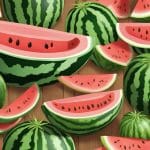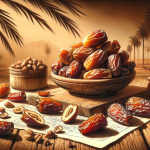Types Of Juicers
If you want to squish the juice out of a fruit, all you need is a good juicer. But which one is better for? There are actually four types of juicers: the centrifugal juicer, the masticating juicer, the triturating juicer, and the citrus juicer.
The most common of the four types of juicers is the centrifugal juicer. An empty cylinder on top of the machine (in a vertical angle) allows you to put the fruits inside. You then hit the ‘on’ button and within seconds the fruits will be pushed down a spinning grinder, which will crash the fruits and dispose of the juice out the back of the juicer. The drawback of centrifugal juicers is that only small amount of juice is extracted (compared to the quantity of fruits), plus there is too much oxidation. That’s why it is best to drink the juice as soon as possible.
The masticating and the triturating types of juicers, however, are able to produce more juice that the centrifugal juicer can, juice which is also better in taste. The masticating juicer employs the use of a single gear, which rotates in a spiral motion. As a result, the single gear slowly but surely breaks up the fruits, stirs the juice together creating a homogenous mix, until it eventually lets the fruit juice pass through; all you have to do is to put a nice cup underneath it, and after a while you will have a high quality juice, full of vitamins and nutrients to get you through the day. As for the triturating juicer, this is probably the best among all types of juicers available in the market. Instead of one gear (that the masticating juicer has), the triturating juicer has two and that’s why it is sometimes called a twin gear juicer. Extracting the juice from the fruits using this machine involves a two-step process. During the first step, the machine slowly crushes the fruits, and during the second the machine applies additional pressure so that the juice is extracted. The disadvantage here is that it will take you a bit more time to prepare your juice, compared with the other types of juicers. Nevertheless, the result will be much more rewarding both in terms of taste, of quantity and in terms of nutritional value. Thanks to the slow fruit processing rate, the triturating juicer produces more juice that contains more fibers and vitamins than the other two types of juicers.
The last of the four types of juicers is the citrus juicer. It won’t do you any good, if you are looking to make apple, banana, strawberry, watermelon juice, and generally any other fruit juice, except for citrus juice. Typical examples of citrus fruits are oranges, mandarins, lemons, and grapefruits (as well as others). All you have to do is cut the orange in half, press it gently against the grinder (which is on top of the machine) and the juice will almost instantly start flowing into the juicer’s reservoir.
All types of juicers can provide you with a fresh and tasty juice. Keep in mind, though, that whatever juicer you are using you are going to be throwing away too much fruit, and a lot of nutrients along with it. In other words, it is simply better if you just cut the fruit with a knife and eat it rather than drink it.






